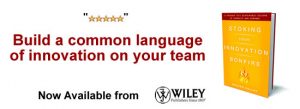Conceptual Framework for Online Identity Roles
I just wrapped up a final project for an aesthetics course this semester, the assignment being to create a “Database of the Self.†I chose to make the database as a representation of the roles we play in terms of how we interact with information online. The roles are overlaid on a panarchy, which shows a visualization of adaptive lifecycles. Though the evolution of every idea or meme won’t necessarily follow this specific path, (it may in fact be rhizomatic, with multiple feedback loops), this begins to flesh out what we become as nodes within an enmeshed series of networks.
The cycle can be thought to begin with the “Activators,†in the lower right side of image.
For an interactive version of the graphic, click here. (Thanks to @gavinkeech for transforming my sketches into the web page). Scroll over the icons for descriptions and traits of each role to pop out. Roles also listed below.
I found this to be an interesting exercise when thinking about the impact and influence we have on the web, and how information travels. For instance, when you RT something on Twitter, you’re fulfilling a “Propagator†function, when you’re introducing people or bridging information you’re a “Connector,†when you’re developing a new theory or model or practice, you are a “Pathfinder,†and so on. It’s a different way of thinking about our relationship with information – one that puts more control in the hands of the user verses just drowning in “information overload.†It’s also an interesting way to think about who to send information to when trying to plant seeds of information and spread ideas.
Thanks to @wildcat2030 for inspiration from Friendships in Hyperconnectivity mindmap and to @gavinkeech for visual design.
Activators are the catalysts of transformational change, manifesting new ideas.
- traits: evolutionary creativity, novelty, experimentation, innovation, freedom, divergence
Pathfinders give meaning to information, illuminating a new direction to pursue.
- traits: clarity, vision, inspiration, foresight, intuition
Facilitators create conditions for information to flow smoothly.
- traits: coordination, positioning, reconfiguration
Enhancers add perspective and insight to what is already known.
- traits: growth, resonance, supplementation
Connectors bridge structural holes and forge new pathways between information.
- traits: adaptation, learning, unification
Propagators build momentum and accelerate the spread of information.
- traits: mobilization, persuasion, diffusion
Amplifiers direct attention and awareness to information of potential value.
- traits: evaluation, recognition of opportunity/risk, discernment
Assimilators show how information is implemented.
- traits: synthesis, integration
Stabilizers maintain equilibrium and balance.
- traits: sustainability, conservation
Disruptors draw attention to chaos and uncertainty, highlighting the potential for new growth.
- traits: dissonance, entropy, degradation
Observers & Scribes
- Archivists, Spectators, Analysts, Advocates, Critics
 Venessa Miemis is a Media Studies graduate student at the New School in NYC, exploring what happens at the intersection of technology, culture, and communication. Connect with her at www.emergentbydesign.com and on Twitter @venessamiemis.
Venessa Miemis is a Media Studies graduate student at the New School in NYC, exploring what happens at the intersection of technology, culture, and communication. Connect with her at www.emergentbydesign.com and on Twitter @venessamiemis.
NEVER MISS ANOTHER NEWSLETTER!
LATEST BLOGS
New Telecommunications and Gaming Developments
I came across the following articles on Engadget and thought they serve as a foil to the recent Unnovation Award…
Read MoreUnnovation Award (Inaugural)
Usually I like to talk about great things that I’ve seen different places, but occasionally a company does something so…
Read More



